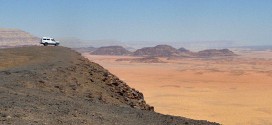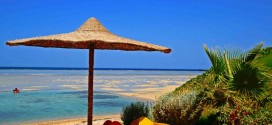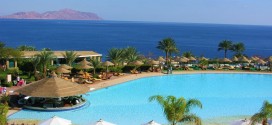
Occupies the extreme northeast corner of the continent of Africa and a small area of southwest Asia (Sinai Peninsula). Egypt is bordered by the Mediterranean Sea to the North, by Sudan to the South, by the Red Sea and Israel to the East, and by Libya to the West.
Land Boundaries: Total: 2.689km
Border Countries: Gaza Strip 11km, Israel 255km, Libya 1.150km, Sudan1.273km
Geographic Coordinates: 27 00 N, 30 00 E
Map References: Africa
Area:
Total: 1,001,450 sq km
Land: 995,450, sq km
Water: 6,000 sq km
Elevation Extremes:
Lowest Point: Qattara Depression – 133m
Highest Point: Mount Catherine 2,629m
Historical Background:
Nominally independent from the UK in 1922, Egypt acquired full sovereignty following World War II. The completion of the Aswan High Dam in 1971 and the resultant Lake Nasser have altered the Nile River in the agriculture and ecology of Egypt. Growing population, limited arable land, and dependence on the Nile, all continue to overtax resources and stress society. The Egyptian government has struggled to ready the economy for the new millennium through economic reform and massive investment in communications and infrastructure.
Egypt time zone is GMT+02.00 from 1st October till 30 April and GMT+03.00 from 1st May till 30 September due to summer daylight saving time.
Most currency exchange locations are open 7days a week, but most banks are closed Friday and Saturday as are many stores and businesses.
Natural Resources: Petroleum, Natural Gas, iron ore, phosphates, manganese, limestone, gypsum,
talc, asbestos, lead, and zinc.
Environment Current-Issues
Agriculture land being lost to urbanization and windblown sands; increasing soil salivation below the Aswan High Dam, desertification; oil pollution threatening coral reefs, beaches, and marine habitat. Limited natural fresh water resources away from the Nile being the only perennial water source, rapid growth in population overstraining the Nile and natural resources.
Population: 71,000,000 (July 2003 EST.)
Age Structure: 0-14 years: 33.96% (male 12,292,185; female 11,721,469), 15-64 years: 62.18% (male 22,190,637; female 21,775,504), 65 years and over: 3.86% (male 1,191,091; female 1,541,459) 2002 EST.
Religion: Muslim (mostly Sunni) 94% Coptic Christian, other 6%
Languages: Arabic (official), English and French widely understood.
Economy:
Tourism has remained a major industry with substantial investment in historical sites, hotels and resorts. Agricultural products as cotton and oil continue to be significant exports. The construction and property industries are suffering due to lack of growth and investment, and unemployment has become a mayor problem with around five million Egyptians looking for work. This rise in unemployment has been accompanied by a slowing down of the privatization process.
Social Life:
Perhaps the greatest change has been in a new conception of family ties. Islamic Egypt has a strong sense of family feeling which remains unaltered to the present day. Due to the mutual aid and support which all members of a family
feel bound to extend towards each other, the social problems of modern Egypt are less acute than in many other countries.
A considerable amount, if not the majority, of Egypt’s population live in larger cities, mostly Cairo and Alexandria. In fact, these two cities dominate the vision of most foreigners. They are vitally important to Egypt’s culture, but
one should not neglect the many other moderately sized cities contributing to the life of Egypt.
Egypt also has an ethic culture. In a city the size of Cairo, there is virtually no crime rate. Many westerners believe that this fact is due to stiff punishment but the real reason is the virtual absence of alcohol and drugs among the local
population as well a strong religious faith.
 Sakura Travel World Group
Sakura Travel World Group








